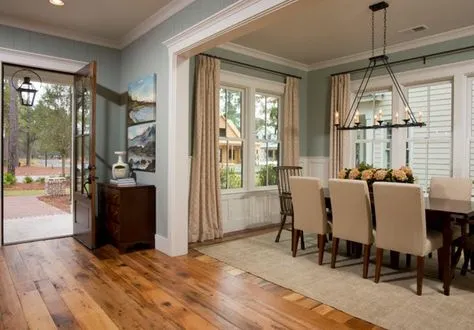Embracing Turquoise Kitchen Decor
Turquoise, a color that evokes the serene beauty of tropical waters and clear skies, has the remarkable ability to transform your kitchen into a tranquil and inviting space. Its versatility allows it to blend seamlessly with various design styles, from coastal retreats to modern minimalist aesthetics. The gentle coolness of turquoise can make a kitchen feel larger, brighter, and more airy. This guide will explore the top seven turquoise kitchen decor ideas, providing you with inspiration and practical tips to create a stunning and personalized culinary haven. Whether you’re planning a complete renovation or a simple refresh, incorporating turquoise into your kitchen can breathe new life into the heart of your home, creating an environment where you’ll love to cook, dine, and entertain. Let’s dive into the world of turquoise and unlock the potential to create your dream kitchen!
Why Turquoise Works in Kitchens
Turquoise’s appeal in the kitchen lies in its inherent characteristics. It is a color that exudes calmness and tranquility, which can create a more relaxing atmosphere, a welcome contrast to the often hectic nature of a kitchen. Furthermore, the color has a unique capacity to brighten a space, making it feel more open and welcoming, particularly in kitchens that may lack natural light. Unlike some bolder colors, turquoise is remarkably versatile, allowing it to work with an extensive range of complementary colors and materials. From soft, muted tones to vibrant, energetic accents, turquoise serves as an excellent foundation for realizing your design vision, offering a broad spectrum of options to match your personal tastes and preferences. Its ability to reflect natural light also contributes to making a kitchen feel more expansive and inviting, enhancing the overall user experience. The flexibility and adaptability of turquoise make it an ideal choice for modern and traditional kitchens.
The Psychology of Color in Kitchens
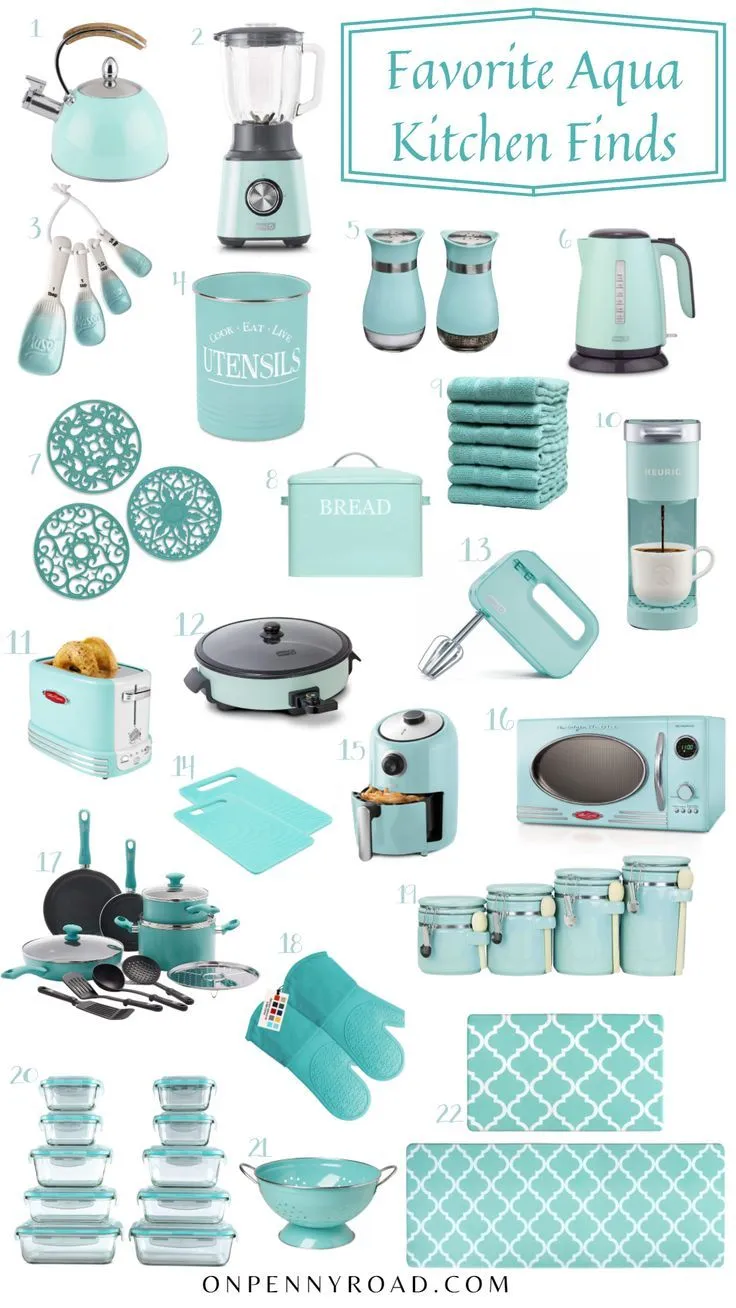
Color psychology suggests that colors can significantly affect our mood, behavior, and even appetite. Turquoise, a combination of blue and green, carries the calming properties of blue and the vitality of green. In the kitchen, turquoise can promote a sense of relaxation and well-being, helping to create an environment conducive to cooking and eating. The color’s association with nature also makes the kitchen feel fresh and connected to the outdoors, enhancing the overall experience. The use of turquoise can reduce stress levels and generate a sense of peace, which is extremely beneficial in the kitchen, which may be busy and sometimes chaotic. By understanding these psychological impacts, you can use turquoise as a key design element to craft a kitchen that is aesthetically pleasing and psychologically supportive.
Top 7 Turquoise Kitchen Decor Ideas
Transform your kitchen into a stunning, inviting space with these top seven turquoise kitchen decor ideas. From subtle accents to bold statements, explore how to incorporate this versatile color to create your dream culinary haven.
Turquoise Paint Colors for Kitchens
Choosing the right turquoise paint can dramatically affect the overall look and feel of your kitchen. Consider the natural light in your space; lighter shades of turquoise work well in kitchens with limited sunlight, creating an airy and bright atmosphere. If your kitchen has ample sunlight, you can opt for deeper, richer turquoise tones. When selecting a turquoise paint, consider the undertones. Some turquoise colors have green undertones, while others have blue. Test paint samples on your walls to see how they look in different lighting conditions throughout the day. This will help you find the perfect shade that complements your kitchen’s style and enhances its appeal. Experiment with different finishes, such as matte for a soft look or satin for easy cleaning.
Best Turquoise Shades for Walls
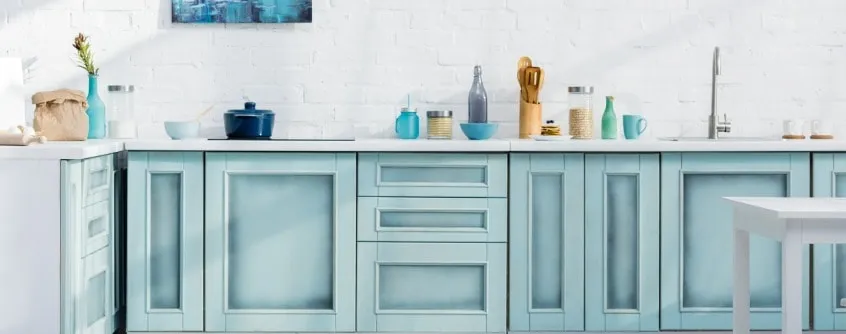
Selecting the perfect shade of turquoise for your kitchen walls involves considering the room’s size, lighting, and the mood you want to create. For smaller kitchens or those with limited natural light, soft, pastel turquoise shades can create an illusion of spaciousness and reflect light. These lighter tones provide a serene, relaxing backdrop. In contrast, larger kitchens with abundant natural light can accommodate deeper, more saturated turquoise hues, adding a bold and dramatic flair to the space. These shades bring a sense of depth and sophistication. Some popular options include soft, seafoam turquoise, reminiscent of coastal settings, or a bolder teal turquoise that can provide a more modern feel. It is important to test the paint samples on your walls and observe how the color changes throughout the day under different lighting conditions.
Choosing the Right Finish
The finish of your paint can significantly alter the appearance and practicality of your turquoise kitchen. Matte finishes offer a soft, non-reflective look that can help hide imperfections on the walls, creating a calm and inviting atmosphere. However, matte paints can be harder to clean, making them less ideal for high-traffic kitchen areas. Satin or eggshell finishes provide a slight sheen, offering better durability and washability, which makes them a great choice for kitchens where splatters and spills are likely. These finishes reflect light more, which can brighten up the space. High-gloss finishes offer maximum durability and are extremely easy to clean, but they highlight imperfections and are best used for accent walls or cabinets. When choosing a finish, consider the balance of aesthetics, durability, and ease of maintenance.
Turquoise Kitchen Cabinetry
Turquoise cabinets can make a bold statement in any kitchen. They can serve as the focal point of the room, providing a vibrant pop of color that instantly elevates the space. Consider painting your upper or lower cabinets in turquoise. For a more subtle approach, you can paint only your kitchen island or a section of cabinets to introduce the color gradually. To prevent the space from feeling overwhelming, combine turquoise cabinets with neutral walls, like white or light gray, to maintain balance. Alternatively, consider a two-tone cabinet design, where turquoise is paired with a complementary color, like wood tones, for a modern look. Always consider your kitchen’s overall style when choosing your cabinet’s finish, such as matte, satin, or high-gloss, to ensure the style complements the rest of the space.
Modern Turquoise Cabinet Designs

Modern turquoise cabinet designs often feature clean lines and minimalist aesthetics. Flat-panel cabinet doors in a vibrant turquoise hue offer a sleek and contemporary appearance, fitting perfectly with modern design principles. Consider incorporating handle-less cabinets for a streamlined look that creates a clutter-free appearance. Pair your turquoise cabinets with metallic hardware, like brushed stainless steel or chrome, for a touch of sophistication and added contrast. In modern kitchens, consider utilizing turquoise as an accent color, possibly on the lower cabinets, with the upper cabinets painted in white or a lighter neutral tone to maintain visual balance. For a bold statement, you can use turquoise cabinets throughout the kitchen. Combine these cabinets with sleek countertops, such as quartz or concrete, to reinforce the contemporary feel and create a cohesive, stylish space.
Adding Turquoise Appliances
Integrating turquoise appliances is a bold and stylish way to incorporate color. Retro-style refrigerators, stoves, and dishwashers in turquoise can add a vintage charm and focal point to your kitchen. If you prefer a more understated approach, consider smaller appliances, like a turquoise stand mixer, toaster, or coffee maker, as accent pieces. These appliances can add a splash of color without overwhelming the space. For a cohesive look, balance the turquoise appliances with neutral cabinetry and countertops. Pairing them with complementary colors, like creamy whites or wood tones, can create a balanced and inviting atmosphere. Always ensure that the chosen appliances align with your kitchen’s overall design style to produce a well-coordinated space that reflects your personal taste.
Turquoise Backsplashes and Countertops
Turquoise backsplashes and countertops offer an excellent opportunity to introduce color and texture into your kitchen design. A turquoise tile backsplash, whether subway tiles, mosaic tiles, or patterned tiles, can provide visual interest and create a focal point. Consider glass tiles for a reflective surface that brightens the space or ceramic tiles for a more traditional look. When selecting countertops, explore materials that complement the turquoise. Solid-surface materials, like quartz or Corian, are available in turquoise shades and offer durability and style. Alternatively, choose countertops that contrast with the turquoise, such as a white or light-colored marble or a wood butcher block, to create a balanced and visually appealing space. This combination allows you to experiment with different textures and designs, which allows you to create a kitchen that is both functional and aesthetically pleasing.
Turquoise Backsplash Ideas
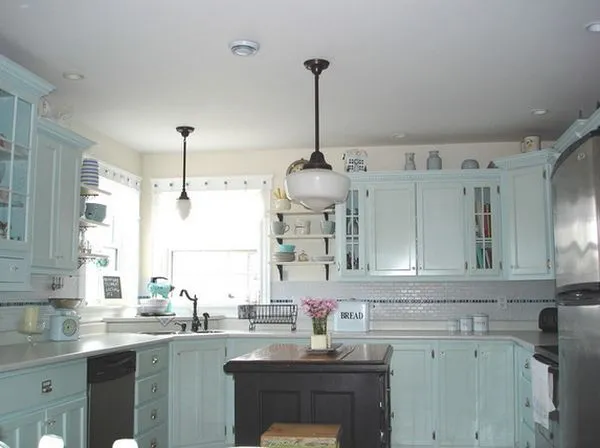
There are various creative options for turquoise backsplashes. Subway tiles are a classic and versatile choice, offering a clean and timeless look that pairs well with any kitchen design. For a more unique touch, use mosaic tiles with varying shades of turquoise to create an eye-catching effect. Consider glass tiles for a reflective, modern look that amplifies the light in your kitchen. Patterned tiles can add personality and visual interest, with geometric designs or intricate patterns. Another option is to use a large-format turquoise tile for a seamless, contemporary aesthetic. The choice depends on your kitchen’s style and your personal preferences. Always consider the overall design of your kitchen, including cabinet colors, countertops, and other elements, to ensure your backsplash complements the space and enhances its overall appeal.
Countertop Materials that Complement Turquoise
Selecting the right countertop material can significantly enhance the visual appeal of a turquoise kitchen. White quartz is an excellent choice, as it provides a bright, clean contrast, allowing the turquoise to stand out. Marble countertops, with their natural veining and subtle patterns, can offer a touch of luxury and elegance, complementing the coolness of turquoise. Butcher block countertops introduce warmth and texture, creating a cozy and inviting atmosphere. Concrete countertops provide a modern, industrial aesthetic that pairs well with bolder turquoise shades. When choosing a countertop, consider durability, maintenance requirements, and your kitchen’s overall design. It is also important to see how the material interacts with your selected turquoise paint or cabinetry to ensure a balanced and harmonious aesthetic.
Turquoise Kitchen Accessories and Decor
Turquoise accessories and decor are perfect for adding pops of color and personality to your kitchen. Consider adding turquoise dish towels, oven mitts, or pot holders for practical accents. Displaying turquoise ceramic bowls, vases, or canisters can enhance the visual interest on your countertops or shelves. Incorporate turquoise artwork, such as paintings or prints, to create focal points and add a touch of sophistication. Use turquoise bar stools or chairs to introduce color into your dining or breakfast area. These accents provide an easy way to experiment with turquoise without making significant changes. Always coordinate the accessories with the existing decor and colors to maintain a cohesive and stylish look.
Textiles and Soft Furnishings
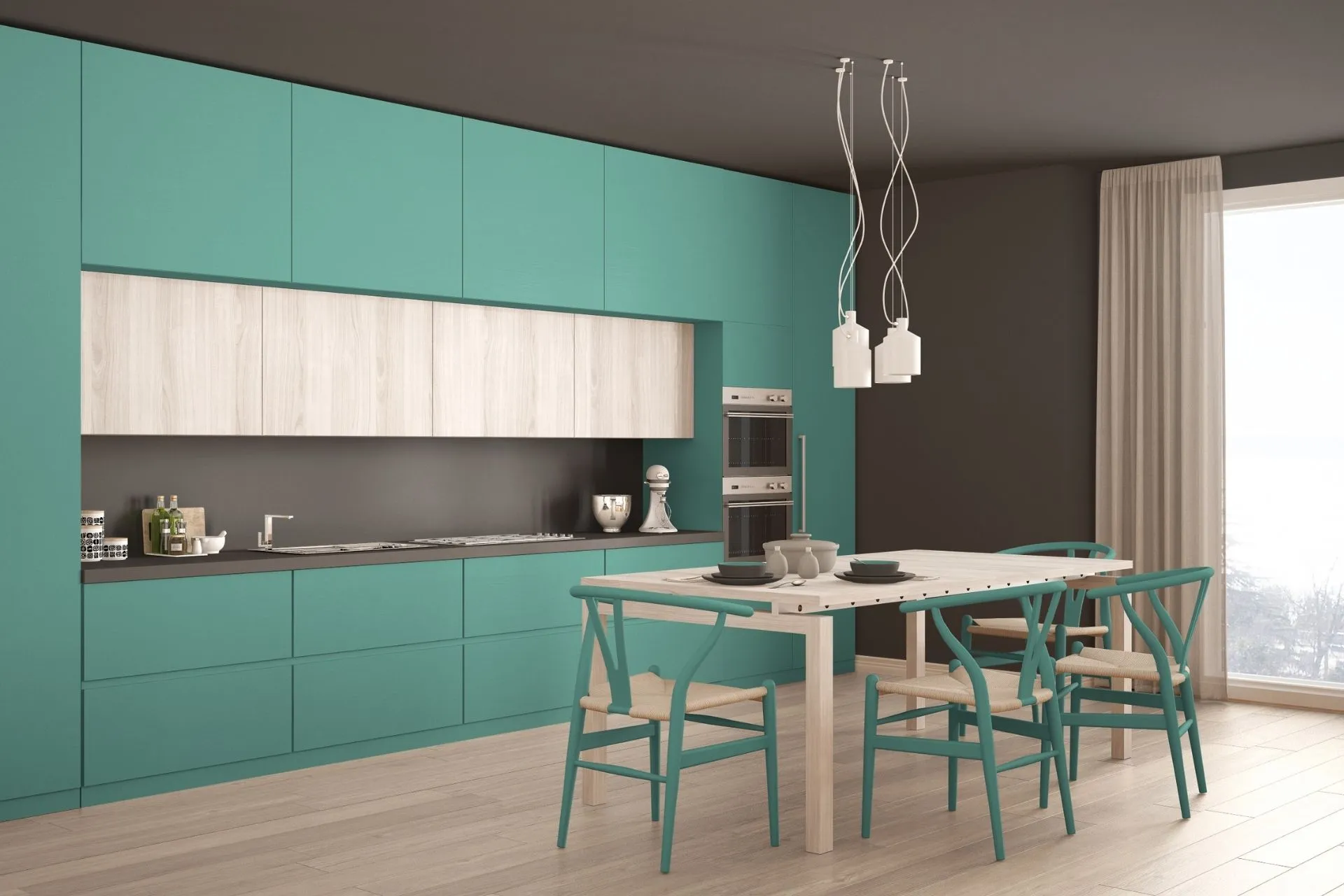
Textiles and soft furnishings, such as curtains, rugs, and seat cushions, can inject warmth and texture. Turquoise curtains can frame your windows and soften the light. A turquoise rug can anchor the space and add comfort underfoot. If you have a dining nook, consider turquoise seat cushions or throws to enhance the area. These soft elements offer a subtle and practical way to incorporate turquoise. Choose materials that complement your overall kitchen style, such as linen or cotton for a casual look. Ensure that the textiles complement other design elements, such as the wall color and the cabinetry, to create a coordinated and inviting space.
Lighting and Fixtures
Lighting and fixtures can both add visual interest and enhance the functionality of your turquoise kitchen. Turquoise pendant lights or chandeliers over the island or dining area can serve as eye-catching focal points. Consider installing turquoise-colored lamps or sconces to add ambient lighting to specific areas, such as countertops or workspaces. Choose metallic finishes, like brushed gold or chrome, on fixtures to complement the turquoise. The type of lighting can affect the atmosphere. For example, warm, ambient lighting can create a cozy and inviting space, while bright, task lighting is ideal for cooking and food preparation. Ensure your lighting design caters to both the aesthetic and functional needs of your kitchen, amplifying its overall appeal.
Incorporating Turquoise Accents
Incorporating turquoise accents is a simple way to experiment with the color without a major commitment. Start with small elements such as turquoise kitchen utensils, cutting boards, or canisters on your countertops. Add turquoise throw pillows or seat cushions to your dining area. Displaying turquoise artwork on the walls can act as a focal point and make the space feel more vibrant. Using turquoise vases, bowls, or decorative items on shelves or open cabinets will give the kitchen a unique style. Consider adding turquoise hardware to your cabinets or drawers. When incorporating turquoise accents, make sure they work well with the rest of your kitchen’s color scheme and design. This will let you gradually introduce the color and create a stylish kitchen.
Turquoise Kitchen Decor for Different Styles
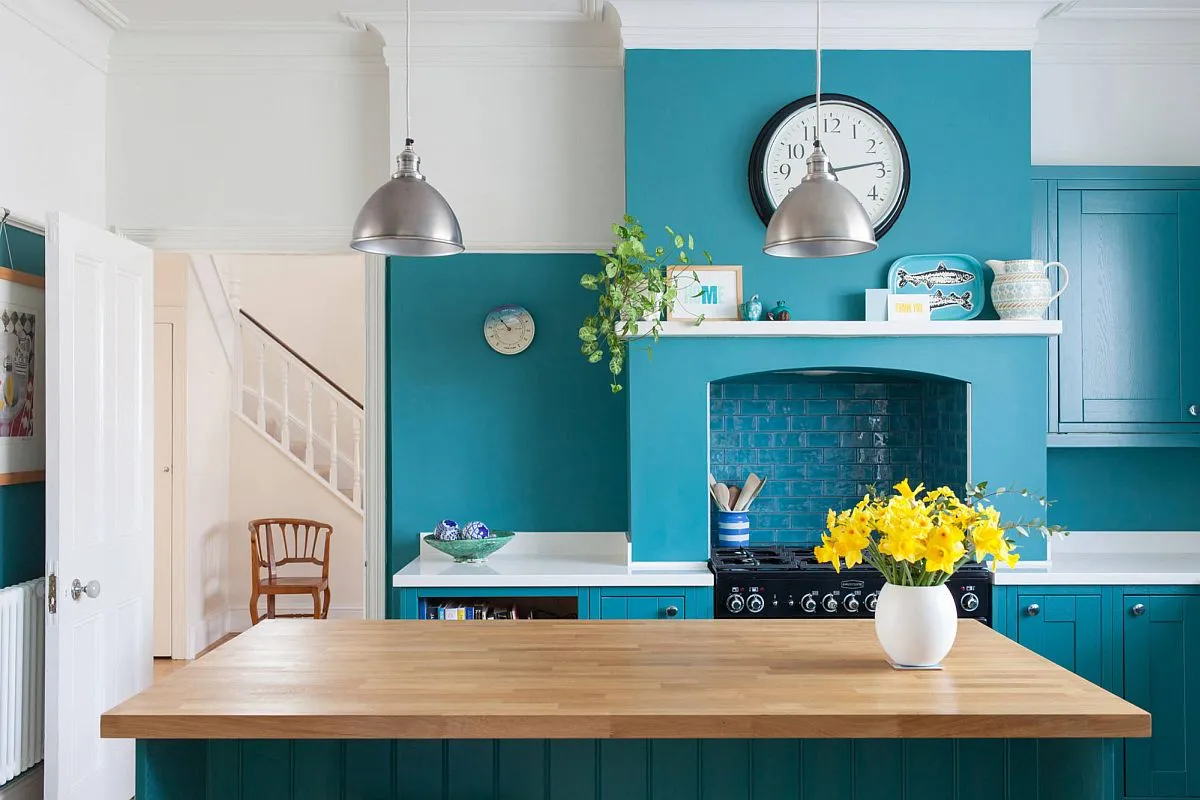
Turquoise adapts beautifully to different kitchen design styles, making it a versatile choice for various aesthetic preferences. From the breezy charm of coastal kitchens to the sleek lines of modern spaces, the hue can be employed to create a range of beautiful and functional areas. Exploring the ways to incorporate turquoise into different styles will help you customize the design to match your taste.
Coastal and Beachy Kitchens
In coastal and beachy kitchens, turquoise effortlessly captures the essence of the sea. Soft, muted turquoise shades on walls or cabinets create a serene backdrop that complements natural materials like light wood and woven textures. Incorporate turquoise accents through accessories, such as striped dish towels, coral-inspired decor, or woven baskets. Use a mix of textures, such as linen curtains and jute rugs, to add depth. The overall goal is to craft a relaxed, airy, and inviting atmosphere that evokes the tranquility of a seaside retreat. Light-colored wood countertops and white subway tile backsplashes will help complete the coastal-themed kitchen, maintaining an authentic feel and visual consistency.
Modern and Contemporary Kitchens
In modern and contemporary kitchens, turquoise can be used to create a bold and stylish statement. Pair bright turquoise cabinets with clean, minimalist lines and sleek hardware for a sophisticated look. Opt for a high-gloss finish on the cabinets to boost the contemporary feel. Use contrasting elements like stainless steel appliances or black countertops to enhance the look. Integrating turquoise through accessories, such as a turquoise backsplash or accent wall, provides a stylish pop of color without overpowering the space. This will give the kitchen a sleek and functional design that represents modern living. Keep the design uncluttered and focus on a few key turquoise elements for maximum impact.
Vintage and Retro Kitchens
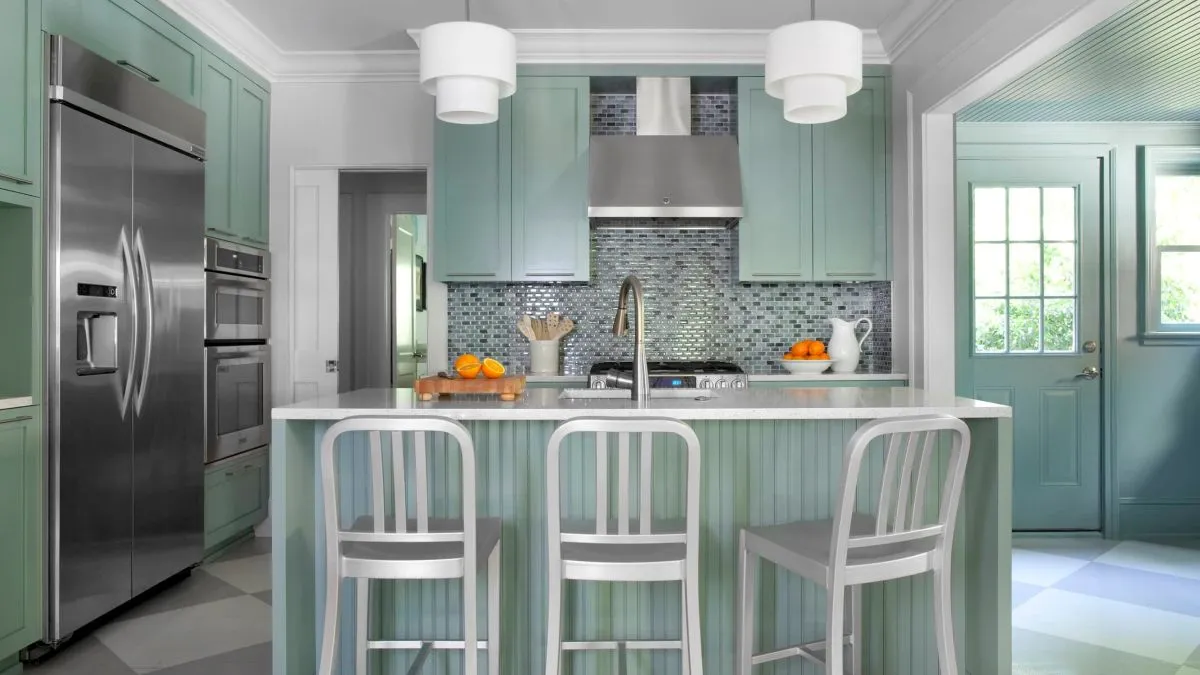
Turquoise can be successfully used in vintage and retro kitchens to capture the nostalgia and character of previous eras. Opt for pastel turquoise shades on cabinets or walls to evoke the retro vibe. Incorporate turquoise appliances, like a retro refrigerator or stove, for an iconic focal point. Combine turquoise with vintage-inspired details, such as patterned wallpaper or checkered floors. Use retro-style accessories, such as ceramic canisters, colorful dish towels, and vintage artwork. This combination will create a unique, fun, and charming atmosphere that reflects the unique aesthetic of a bygone era. Adding these elements will help your kitchen tell a story, evoking nostalgia and elegance.
Conclusion
Turquoise presents a versatile and captivating choice to enhance your kitchen decor. The various ideas and methods described in this guide will allow you to bring in this flexible hue, from the gentle coastal themes to modern and vintage settings. Whether you are redesigning completely or making slight adjustments, embracing turquoise will enable you to create a kitchen that is visually appealing, relaxing, and personalized. Through this guide, you can confidently transform your kitchen into a space you’ll enjoy and love for years to come.
